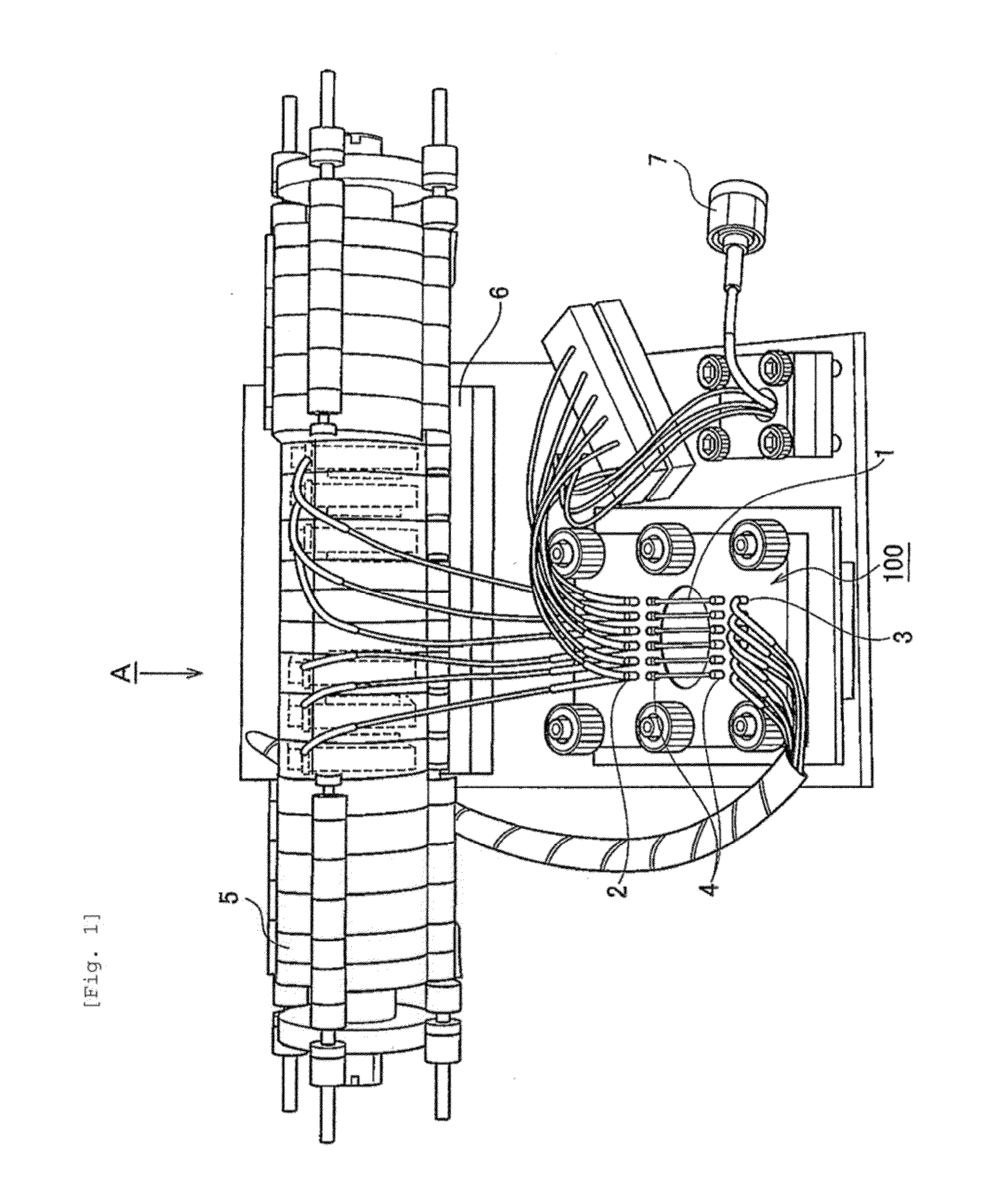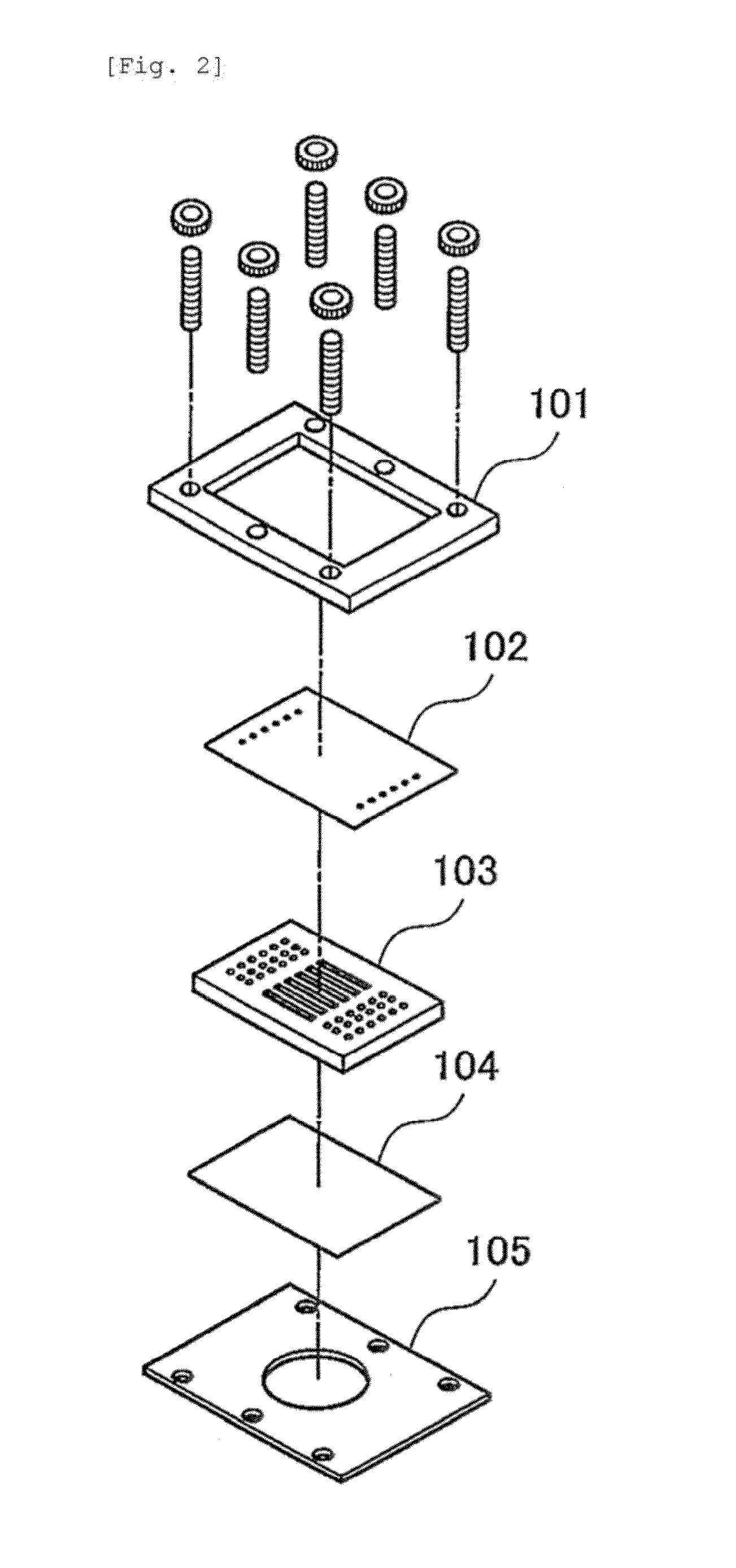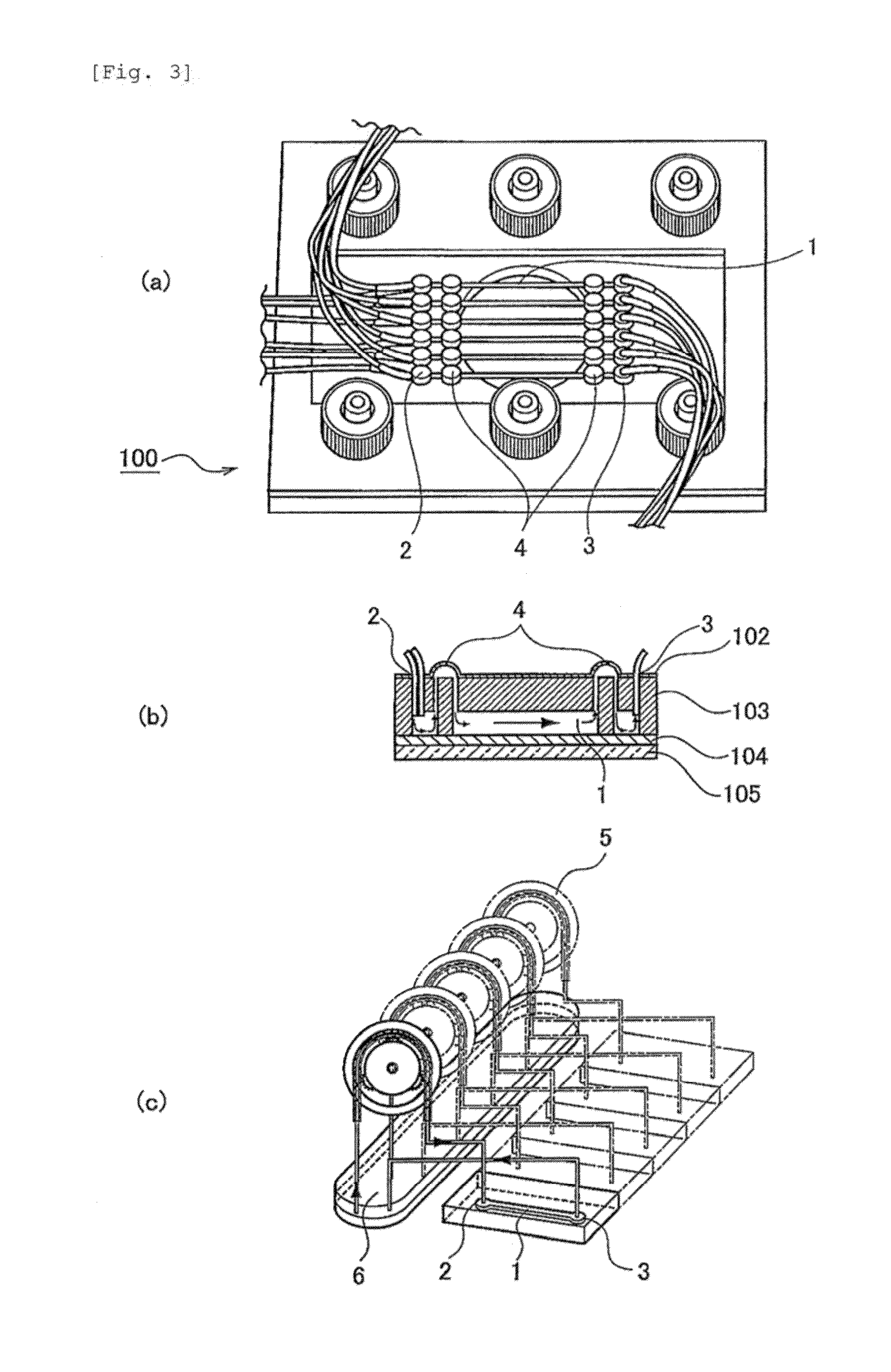Method for culturing pluripotency-maintained singly dispersed cells by means of laminar flow
- Summary
- Abstract
- Description
- Claims
- Application Information
AI Technical Summary
Benefits of technology
Problems solved by technology
Method used
Image
Examples
example 1
Preparation of Microfluidic Device
[0056]A polyethylene (PE) membrane 102, a polymethylsiloxane (PDMS) layer 103 and an SU8 layer 104, which is a glass plate to which SUS was applied, were sandwiched, between clamps 101 and 105, to construct a microfluidic chip 100 (FIG. 2). More specifically, the PDMS layer was prepared by pouring, to a thickness of 3 mm, a thermosetting PDMS (Slipot 184, Toray-Daw Corning, Japan) into a mold prepared by SU8 lithography for formation of 6 grooves (width, 0.5 mm; length, 20 mm; height, 0.5 mm), followed by curing at 80° C. for 4 hours in a drier. By removing the cured PDMS from the mold, a PDMS layer with 6 channels formed thereon was obtained. At both ends of the channels in the PDMS layer, holes were made as inlets and outlets using a stainless steel biopsy needle having a diameter of 1 mm. The SU8 layer was prepared by applying SU8 (SU-8 2010, Microchem) to a glass plate and curing the SU8 by UV irradiation. A cross mark was given by SU8 lithograp...
example 2
Culture of iPS Cells Using Microfluidic Device, and Evaluation Thereof
[0058]OCT3 / 4, SOX2, KLF4 and c-MYC were introduced to human embryonic lung fibroblasts (TIG3) provided by the JCRB Cell Bank using a retrovirus, to induce an hiPSCs line. On a Matrigel-coated dish, TIG3-iPSC was cultured in an MEF (mouse embryonic fibroblast)-conditioned hES medium (DMEM / F12 supplemented with 20% knockout serum replacement (Invitrogen, Carlsbad, Calif., USA), L-glutamine, non-essential amino acids, 2-mercaptoethanol and 10 ng / ml bFGF (Peprotech, Rocky Hill, N.J., USA)).
[0059]The recovered cells were fixed using 4% PFA (paraformaldehyde) / PBS (phosphate buffered, saline) at room temperature for 10 minutes, and washed in PBST (PBS supplemented with 0.1% Triton X-100), followed by performing pretreatment at 4° C. overnight in a blocking solution (PBST supplemented with 3% BSA and 2% skim milk (DIFCO, USA)). Subsequently, immunoreaction was performed with primary antibody: anti-OCT4 (1:50, Santa Cruz B...
example 3
Evaluation of Flow Field Based on Simulation and Hydromechanics
[0063]By confocal microscope analysis, hiPSCs on the channel were confirmed to have a volume of 550 μm3, diameter of 24.5 μm and height of 2.2 μm (FIG. 5a). The confocal microscope used had the following constitution: microscope, IX71 (Olympus); confocal scan unit, CSU-X1 (Yokogawa Electric Corporation); and objective lens, 100 UPlanSAPO NA1.4 (Olympus).
[0064]Using numeric codes obtained by the finite volume method (FVM) and the immersed boundary method, simulation based on numerical fluid dynamics was carried out. In terms of FVM, the continuity equation and Navier-Stokes equation were used after discretization. These were solved for the time-dependent, incompressible and three-dimensional conditions as described in Equations (1) and (2).
[Formula1]∂Ui∂xi=0(i=1,2,3)(1)ρfDUiDt=-∂P∂xi+∂∂xj(μ∂Ui∂xj)(2)
[0065]As the fluid and fin, properties of water and stainless steel were used, respectively. For discretization of Equation ...
PUM
 Login to View More
Login to View More Abstract
Description
Claims
Application Information
 Login to View More
Login to View More - R&D
- Intellectual Property
- Life Sciences
- Materials
- Tech Scout
- Unparalleled Data Quality
- Higher Quality Content
- 60% Fewer Hallucinations
Browse by: Latest US Patents, China's latest patents, Technical Efficacy Thesaurus, Application Domain, Technology Topic, Popular Technical Reports.
© 2025 PatSnap. All rights reserved.Legal|Privacy policy|Modern Slavery Act Transparency Statement|Sitemap|About US| Contact US: help@patsnap.com



